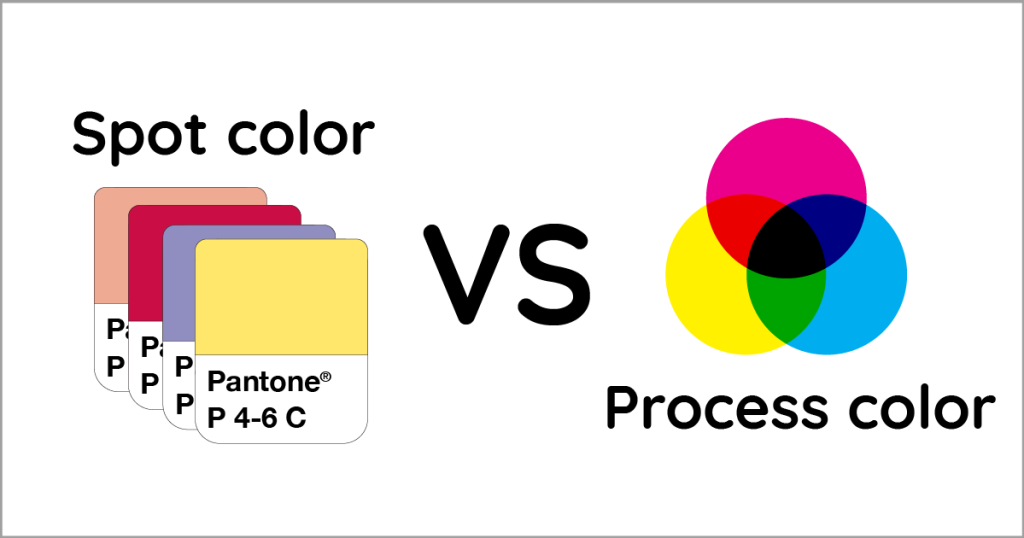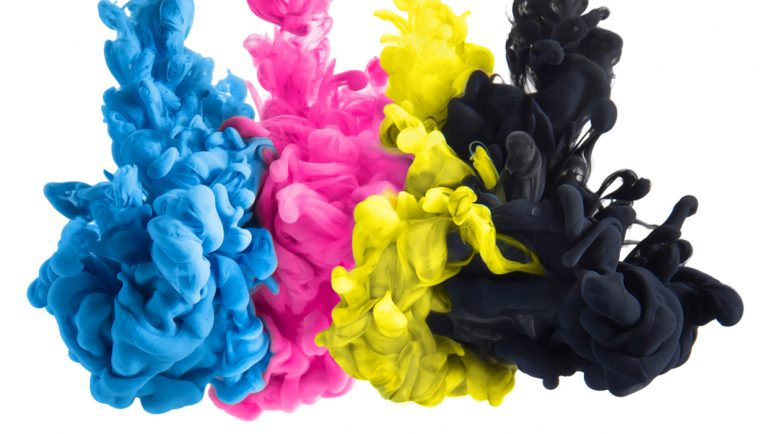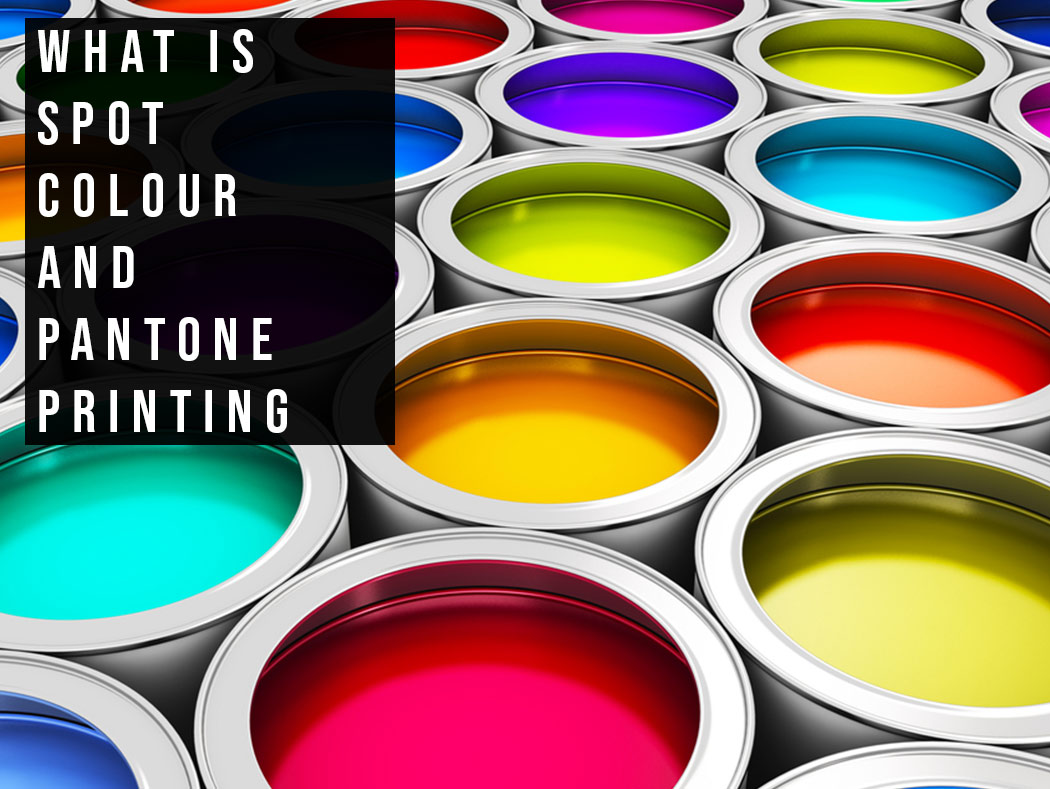Spot Color VS CMYK Color Why Does it Matter?

Process color, the CMYK (Cyan, Magenta, Yellow, and Key) and spot color (also known as Pantone or PMS) are two different color standards with distinct applications and characteristics in printing.
CMYK:
- CMYK is a subtractive color model that uses a combination of cyan, magenta, yellow, and black inks to create various colors in printed materials.
- CMYK is typically used in printing presses where these four ink colors are mixed to produce a range of colors in the image.
- CMYK color mode is suitable for many printing jobs, especially those where color accuracy is not critical.

Spot color:
- Spot color is a specific color made by mixing specialized inks or pigments, often referred to as Pantone or PMS colors.
- Spot colors are precisely formulated individual colors rather than a mixture of multiple ink colors.
- Spot colors are commonly used for printing projects requiring precise color matching, such as brand identities, company logos, and brand colors.
- Using spot colors ensures consistent color across different printing presses or materials.

In summary, CMYK is a universal color mode suitable for most printing jobs, while spot colors are more appropriate for situations requiring specific color accuracy and consistency, especially for brand recognition and consistency.
If you have any questions regarding these prints or if you’re uncertain about choosing a printing method, feel free to contact us at any time.
